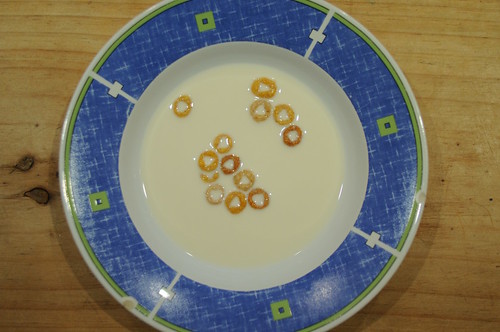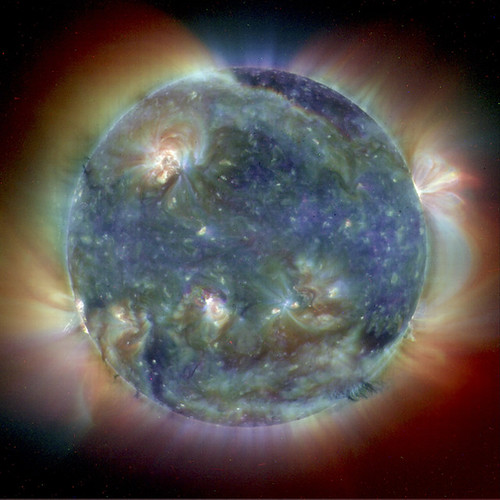Awesomeness Round-up – 12/6/10
- By Sara Mitchell
- December 6, 2010
- Comments Off on Awesomeness Round-up – 12/6/10

Image credit: NASA image created by Jesse Allen, using Landsat data
provided bythe University of Maryland’s Global Land Cover Facility.
The biggest NASA news this week was the astrobiology press conference that had people buzzing about what the new discovery could be. The press release, when it was finally announced turned about to be about researchers who worked with microbes that live in the toxic Lake Mono; it has a pH of near 10, with a high (200 µM) concentration of arsenic in the water.
Science blogger PZ Myers wrote a good article which explains the science of the discovery. Here’s an exerpt:
The bacteria living [in Lake Mono] were already adapted to tolerate the presence of arsenic, and the mechanism of that would be really interesting to know…but this work didn’t address that… what they did was culture the bacteria in the lab, and artificially jack up the arsenic concentration, replacing all the phosphate (PO43-) with arsenate (AsO43-). The cells weren’t happy, growing at a much slower rate on arsenate than phosphate, but they still lived and they still grew…
The arsenate bacteria are bigger [than the bacteria grown on arsenate with no phosphate], but thin sections through them reveal that they are actually bloated with large vacuoles. What are they doing building up these fluid-filled spaces inside them? We don’t know, but it may be because some arsenate-containing molecules are less stable in water than their phosphate analogs, so they’re coping by generating internal partitions that exclude water.
What [the researchers] showed was that, in the bacteria raised in arsenates, the proportion of arsenic rose and the proportion of phosphorus fell, which suggests indirectly that there could have been a replacement of the phosphorus by arsenic.
So what does it all mean? It means that researchers have found that some earthly bacteria that live in literally poisonous environments are adapted to find the presence of arsenic dramatically less lethal, and that they can even incorporate arsenic into their routine, familiar chemistry.
So, it’s not quite alien life, or even earth-life based on alien chemistry, but it’s interesting work nonetheless.
In other weird news, scientists announced in a recent issue of Astrophysical Journal Letters that they’ve spotted an oddly bent galaxy in the gas filament connecting two huge galaxy clusters. It’s sort of boomerang-shaped, and astronomers used ground-based telescopes to take observations of it. They’re interested to study this galaxy and these cosmic filaments to better understand the structure and evolution of the Universe.
Earlier this year, a paper in the Physical Review Letters (the “Letters” are shorter, timely papers released in an off-shoot of a journal) also looked into the way that galaxy clusters clump together. In that paper, the authors refer to the “Cheerios effect” where galaxy clusters tend to clump together like cereal in a bowl of milk. An article from Discovery looks at the connection between that paper and this recently-discovered bent galaxy.
Don’t forget about our space-themed snowflake contest! We have some cool NASA prizes (and we’ve gotten a ton of requests for some our “as seen on TV” goodies” – and this is your big chance to win some! Our contest blog post has rules and info on entering!
Also, look – Star Wars snowflakes! And while you can’t use these, because they are copyrighted (and someone else’s work), they are pretty darn cool! Inspired yet?
Happy 15th birthday, SOHO! That’s right, the Solar and Heliospheric Observatory blasted into space from Cape Canaveral on December 2, 1995! Read more on Geeked on Goddard.
Speaking of the sun, here’s a video of data from the STEREO spacecraft. It shows 2.5 days in the life our star in extreme ultraviolet light (Nov. 23-25, 2010). Look for plasma tendrils and filaments at the sun’s edges.
Lest we leave out SDO, here is a movie of the HMI instrument’s data (Nov. 13-19, 2010) showing sunspots.
Actor Wil Wheaton did more voicework for the Spitzer Science Center for a short called “Robot Astronomy Talk Show: Destroyer of Worlds”





